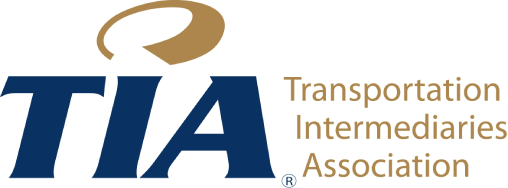August Market Update
- Posted on 7 Aug, 2025
As we head into August, freight markets remain stuck in neutral. While there are a few pockets of tightening, the overall tone is still soft across most modes. Tariff chatter, economic uncertainty, and shifting fleet strategies are shaping a market that’s cautious but quietly evolving. Here’s what we’re seeing across the supply chain.
Dry Van
DAT reported that dry van volumes remain soft with no signs of seasonal uplift and spot rates are steady and $1.65/mile national average, only about $0.02 higher than last year and 2023. DAT’s Top 50 lanes hitting $1.99/mile which is $0.34 higher than the national average.
Load-to-truck ratio reached 6.89 as load postings rose 4% WoW and 8% YoY. We saw equipment postings drop 10%.
Ryder reported that tender rejections are rising 5.79% nationally and in key markets like Atlanta, Dallas, LA, and Chicago which all saw tender volumes decline between 10% to 28.7%.
Contract rates have been under pressure due to weak freight demand. During the recent bid season, shippers used this soft market to negotiate lower prices. However, large carriers resisted cutting rates too deeply, which may have caused more freight to shift to the spot market in Q3. Despite soft demand, large carriers’ reluctance to drop contract rates has led some freight to shift to the spot market, though not enough to drive significant rate spikes yet. Their resistance seems to be holding the line on contract pricing because for the first time in three years, there was no post–July 4th dip in rates.
Reefer
Mexico remains vital and supplies over a third of North American truckload produce. The US imports over 90% of Mexico’s fresh fruit and vegetables. Key commodities include tomatoes, watermelons, avocados, peppers, and cucumbers.
DAT’s data states that despite Mexico’s crucial role in North American produce supply, overall reefer volumes are down approximately 5% YoY largely due to tariff uncertainty affecting cross-border trade. Reefer Load-to-Truck Ratio surged to 11.95, signaling tightening capacity.
Not much to note on reefer spot rates since they’ve held steady at $1.96/mile which is in line with the past 2 years.
Maritime
Arrive reported that import orders briefly surged by 12% year-over-year in early July after a pause on elevated China tariffs. But the spike didn’t last and by mid-July, volumes dipped as high inventory levels and weaker consumer spending brought demand back down.
Intermodal
Rail intermodal volumes are strong overall and rebounded in late July after a soft June. This increase concentrated in Western railroads likely due to shifting import traffic.
Union Pacific and Norfolk Southern are planning to merge and create the first coast-to-coast railroad in the U.S. This new rail network would stretch across 43 states and connect to about 100 ports, making shipping faster and more efficient by cutting out handoffs between different rail lines.
In Union Pacific’s press release they state:
“The combined company will deliver faster, more comprehensive freight service to U.S. shippers by eliminating interchange delays, opening new routes, expanding intermodal services, and reducing distance and transit time on key rail corridors. A more truck-competitive solution, the Union Pacific Transcontinental Railroad will decrease highway congestion”
This will still need approval from government regulators, and that could take time. If all goes well, the deal could close by the end of 2026 and be fully up and running by 2027.
Economic Indicators
Retail spending grew only .6% compared to last year, indicating steady but cautious consumer behavior. It’s not recessionary, but it’s not booming either. Manufacturing output remains nearly flat at a growth of .3% YoY. This signals that freight demand from industrial shippers (like raw materials and heavy equipment) isn’t picking up significant momentum.
Freightwaves and Ryder reported orders for new tractors dropped sharply by 29% YoY, suggesting fleets are pulling back on expanding driver capacity. This is often a response to soft freight volumes and economic uncertainty. In contrast, trailer orders have skyrocketed at 256%. Carriers appear to be prioritizing operational efficiency and growing their trailer pools to drop and hook freight than investing in new power units. It’s a pivot toward productivity over expansion.
Persistent inflation may impact upcoming seasonal surges, particularly for back-to-school and holiday retail. If consumer spending is squeezed, retailers may scale back inventory orders, softening what’s traditionally a high-volume shipping season.
Regulatory & Operational Risks
Continued carrier attrition and fleet downsizing could constrain capacity unexpectedly. With smaller carriers continuing to exit the market and surviving fleets reducing their number of trucks, this ongoing capacity reduction could tighten the market if volumes pick back up leading to potential rate spikes or service disruptions.
If IEEPA Tariff Authority is overturned, it could open the door for more trade and reduce the likelihood of future surprise tariffs and could possibly revive international trade volumes.
Market Outlook
As of right now we are expecting continued soft volumes, flat rates, and excess capacity through Q3 and possibly into 2026. We see some rising rejection rates as potential early signs of tightening, but no clear inflection point yet. Back-to-school season might provide a mild boost, but inflation and overstocking could suppress any real momentum. With peak season possibly behind us, Q3 is shaping up to be quieter than usual unless new demand drivers emerge.
Key Takeaways
- Dry van spot rates remain flat at $1.65/mile nationally, with slight pressure from rising tender rejections and reduced truck postings.
- Reefer volumes are down ~5% YoY due to tariff instability, but the Load-to-Truck Ratio spiked to 11.95, signaling tightening capacity even as spot rates hold steady at $1.96/mile.
- Import volumes briefly surged after China tariff news, but quickly fell again due to high inventories and soft consumer demand with no lasting rebound yet.
- Intermodal volumes rebounded in late July; a Union Pacific–Norfolk Southern merger could create the first coast-to-coast rail network which is promising major efficiency but still pending regulatory approval.
- Retail and manufacturing growth are basically flat, while fleets are pausing on new tractor purchases and investing in trailer pools to boost efficiency instead of expanding headcount.
- Carrier exits and downsizing continue, quietly trimming capacity. If demand rebounds, we could see tightening and spot rate spikes.
- Expect soft volumes and flat rates to linger through Q3 and possibly into 2026, unless inflation drops or a new demand surge breaks the stalemate.





